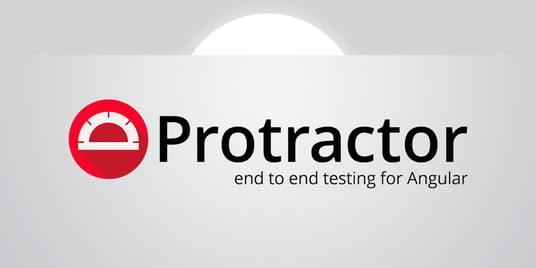Get a Free Trial
Creating, executing, and maintaining reliable tests has never been easier.
Earlier this year, the Angular team announced that they would cease development for open source end-to-end automated testing tool Protractor at the end of 2022. As a popular and long-established tool for automated web application testing, Protractor was an early pioneer in enabling behavior-driven end-to-end testing. But as test automation and quality assurance have evolved to accommodate agile development and the demands of testing more complex applications, the Angular team found that the tool they created in 2013 was struggling to keep pace. Though Protractor will always be known as an innovator in the world of QA and automated testing, the demands of software quality require new solutions.
New Test Automation Tools Are Changing the Landscape
Fortunately for Protractor users, the 2022 timeline gives them over a year to evaluate new test automation solutions. This means they have ample time to not just explore the quickly growing world of test automation, but also consider how new testing capabilities can support their organization’s DevOps adoption strategy, product quality, and customer happiness.
Managing Complex Webpages
One of Protractor’s most valuable features was the ability to automatically manage asynchronous web page element updates. Usually with Selenium WebDriver, software testers needed to add wait steps to their testing scripts to ensure that all elements were updated to run the test. This added complexity and fragility to already code-heavy automated tests.
Since Protractor launched in 2013, the challenges of managing complex web pages hasn’t become any easier. The growing popularity of APIs, demand for online purchasing options, and rising customer expectations for the digital experience have all contributed to web pages with a dizzying array of elements that need to be tracked and managed for effective testing.
Fortunately, new test automation tools are adopting technologies like AI and machine learning to help testers manage the ballooning volume of web page elements. These technologies allow newer test automation tools to develop an understanding of each individual element, how it should work, and how it should interact with other elements. This enables the solution to automatically flag elements that fail tests, as well as update tests as the UI evolves, drastically cutting down the maintenance needed to manage automated UI tests. As QA teams plan their post-Protractor test automation strategy, advanced capabilities like AI and machine learning-backed smart element locators are critical to building on the functionality offered by Protractor while also setting the stage for emerging test automation features.
Expanding End-to-End Testing
By harnessing the combined power of Selenium WebDriver, Jasmine, Node.js, and more, Protractor was at the forefront of automating end-to-end tests. At the time of its launch in 2013, Protractor’s ability to support behavior-driven development and cross-browser testing was essential for QA teams embracing their role as leaders of the customer experience. As these quality leaders prepare to adopt a new test automation strategy, they need to consider how their next tool will support end-to-end testing as it continues to evolve.
First, the definition of E2E testing is rapidly changing as new user touchpoints like email and PDFs become integrated into the customer journey. This not only adds to the volume of tests necessary to fully execute end-to-end tests, but also introduces new types of automated tests that need to be accessible to manual testers, test automation engineers, and developers alike to build a culture of quality. In order to maintain the E2E testing capabilities built on Protractor, QA managers need to work with their testing teams to identify test automation solutions that can accommodate their current testing strategy as well as grow and adapt to changing customer needs and quality requirements.
Second, effective end-to-end testing is data-driven and closely tied to the behavior of real users. Protractor was one of the first solutions to package both test automation behavior-driven development capabilities into a single platform, allowing QA to join developers in focusing the entire SDLC on the customer. Now, that focus is driving everything from DevOps and CI/CD adoption to digital transformation, unifying the enterprise under a singular vision for the customer experience. As QA shifts to quality engineering, they'll need test automation tools that embrace the vision of Protractor by integrating with tools like Segment. This will allow web application development teams to tie their automated testing strategy directly to real user behavior, enabling a data-driven approach to testing that helps the product evolve in conjunction with customer needs and expectations.
Data-driven testing also sets the stage for an adaptable testing strategy that quickly responds to business needs, especially as web applications increase their reliance on third-party integrations like APIs. Traditionally, API testing has been too complex and fragile for quality teams to perform on a regular basis. But as they’re used for critical user flows like checking out on an ecommerce website, testers need both the tools and the time to expand testing coverage of their web application’s APIs. Leveraging user behavior data ensures an efficient, focused testing strategy that can incorporate new types of testing, like API testing, without sacrificing product velocity.
Test Automation as a Pillar of Quality Strategy
Quality assurance is moving into the spotlight as more organizations recognize its critical role in managing the customer experience, ensuring DevOps success, and overall business success. Since its initial release in 2013, Protractor was a leader in supporting quality teams as they embraced data-driven end-to-end automated testing. As teams prepare to sunset Protractor and adopt new test automation solutions, turning to the original mission and value of Protractor sets the stage for identifying testing tools that can carry their teams into the new era of software quality and test automation.





